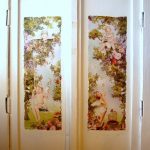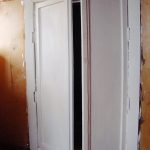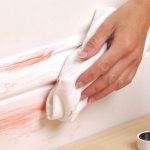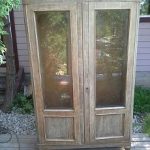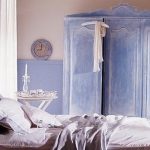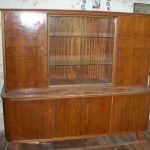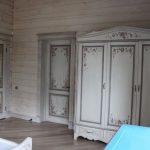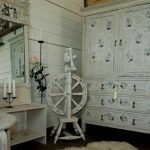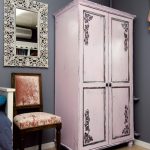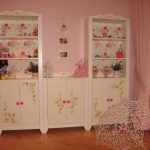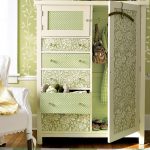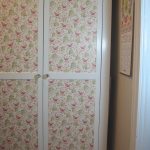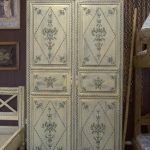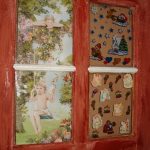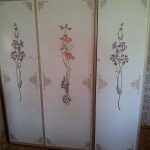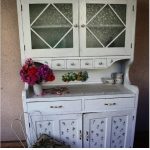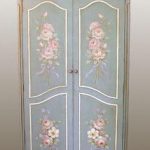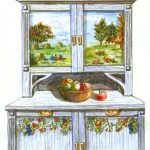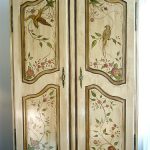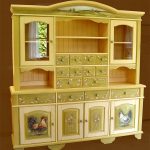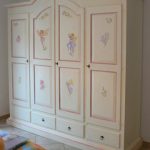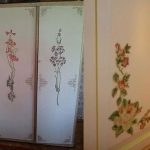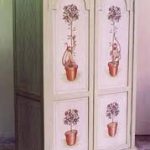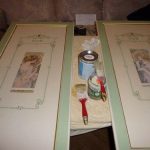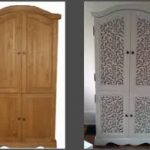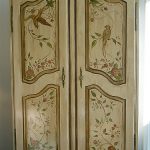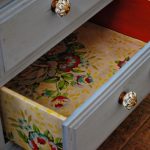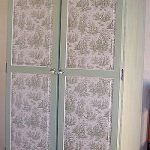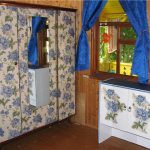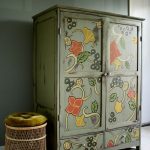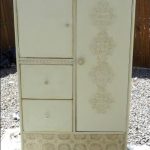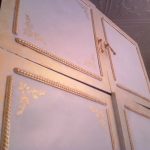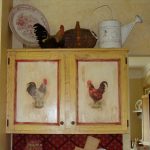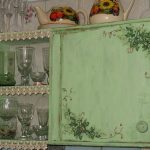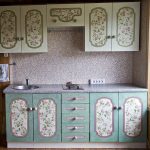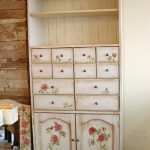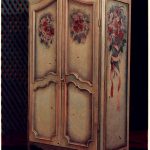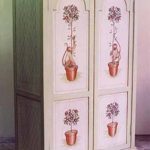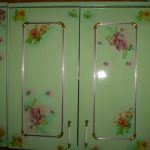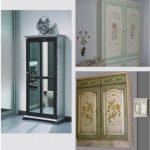Doing decoupage wardrobe
Breathe new life into the old wardrobe with your own hands, and you can create furniture that will seamlessly fit into the interior using decoupage decorating technique.

Breathe new life into the old wardrobe with your own hands, and you can create furniture that will seamlessly fit into the interior using decoupage decorating technique.
The principle of decoupage is gluing paper drawings to any household items to create a certain style. Decoupage refers to the type of work, called upsikling - the decoration of old things, creating new quality items from them.
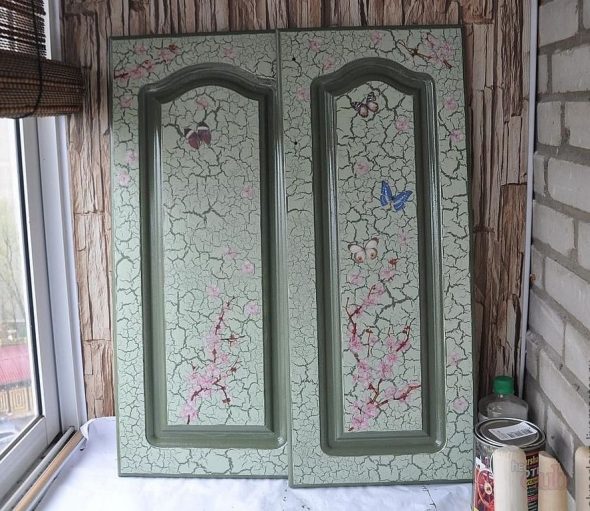
It is most convenient to use napkins - softness, subtlety of paper allow you to accurately make a beautiful ornament on the furniture, creating invisible transitions from the common surface.
Now there are a lot of offers to buy new furniture, but do not rush to throw out the old, convenient wardrobe - it is possible to transform it with the help of decoupage even to those who have never done or not repaired furniture with their own hands. Picking up materials and turning on the imagination, you can do the decoupage of the cabinet with your own hands in any style - classical, Provence, country, modern.

To soften the transition between the plane of the main canvas and the picture will help applying several layers of varnish.
Content
Ideas for decoupage
In addition to special drawings for decoupage, you can transform a wardrobe using any available paper tools:
- napkins;
- color pictures from magazines;
- wallpaper;
- colorful prints.
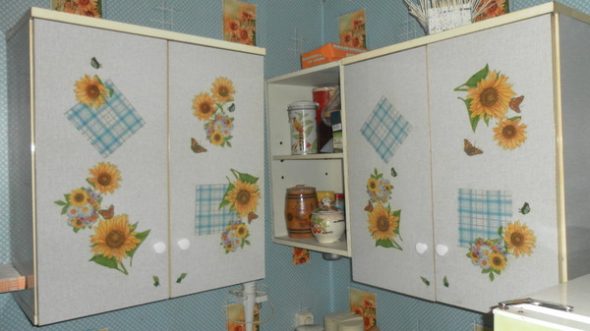
Remove all elements from the frame: handles, doors, unscrew hinges, pull out drawers and, preferably, remove the facades from them - they are carefully processed separately.
It is most convenient to use napkins - softness, subtlety of paper allow you to accurately make a beautiful ornament on the furniture, creating invisible transitions from the common surface. Napkins, sold in regular stores, are suitable for creating wardrobe decor in any style - you just need to choose a suitable ornament. Large selection is provided to create a Provence style - cozy, romantic, sophisticated images of flowers, plants, executed in pastel colors on a light background, will create comfort, fill with tranquility.
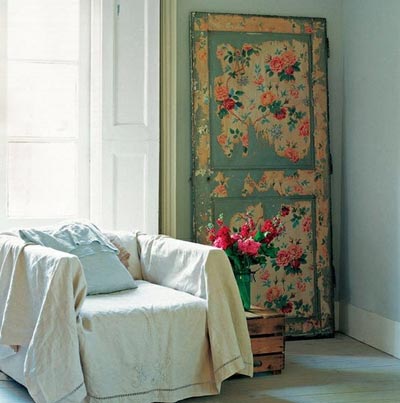
A large sandpaper or abrasive mesh wipe the islands, previously treated with paraffin.
Thicker textures are first thinned with sandpaper. To soften the transition between the plane of the main canvas and the picture will help applying several layers of varnish.
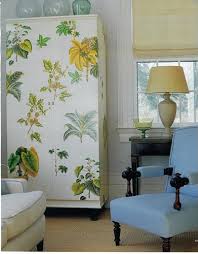
To soften the transition between the plane of the main canvas and the picture will help applying several layers of varnish.
Wallpapers are suitable for those who are just beginning to master the decoupage technique of furniture. You can make a unique decor with them, using several different types on the same plane or having decorated the projections of the facades.
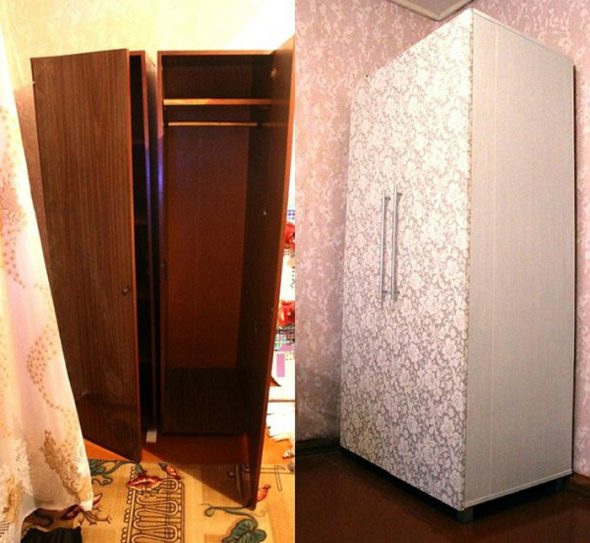
The most difficult thing to prepare for a decoupage is a polished cabinet - the paint on the polish falls badly, so it must be thoroughly cleaned with a large emery cloth.
Decoupage of the old cabinet is not limited only to paper materials, you can use beads, sequins, other decorating objects.
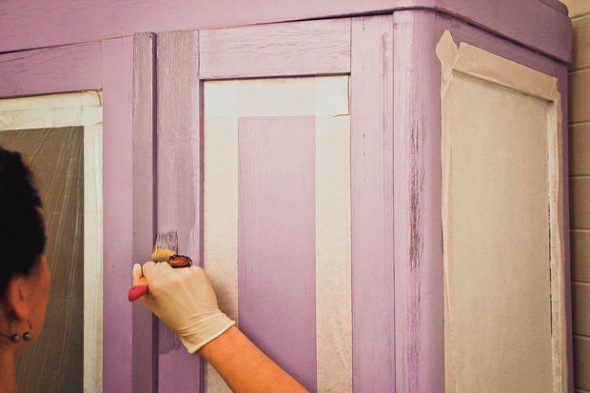
It breaks off, and it is not cut off so that the transitions between the pattern and the plane of the cabinet are invisible.
Training
Preparing a closet for decoupage is the most time-consuming process, accompanied by dust.
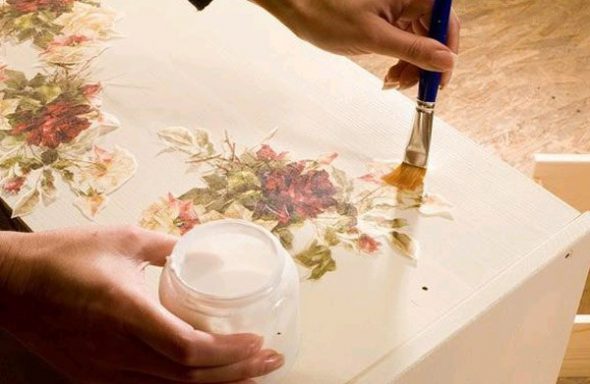
Moving from the center of the napkin, using a brush, gently straighten the paper, pressing lightly, avoiding wrinkling and wrinkling.
To work required
- Abrasive grids: significant surface irregularities are treated with coarse-grained, then medium texture, fine polished under the finish.
- Grater for fixing the grid.
- Dry cloth, sponge or brush.
- Putty wood.
- The spatula is rubber - it is soft and covers up all the pits, cracks.
- Roller.
- Primer - acrylic can be used for all types of finishes.
- Respirator.
- Acrylic paint.
- Roller.
- Narrow tassel.
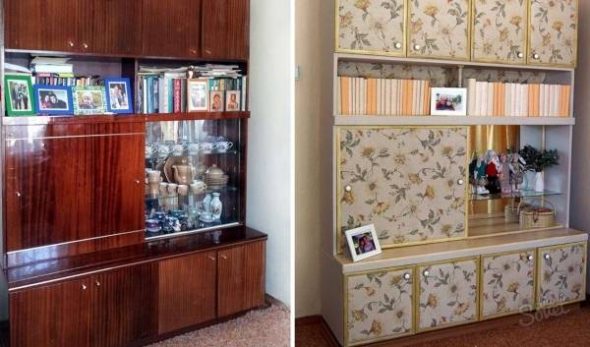
Periodically it is necessary to moisten the drawing with diluted PVA glue.
Furniture preparation
Remove all elements from the frame: handles, doors, unscrew hinges, pull out drawers and, preferably, remove the facades from them - they are carefully processed separately.
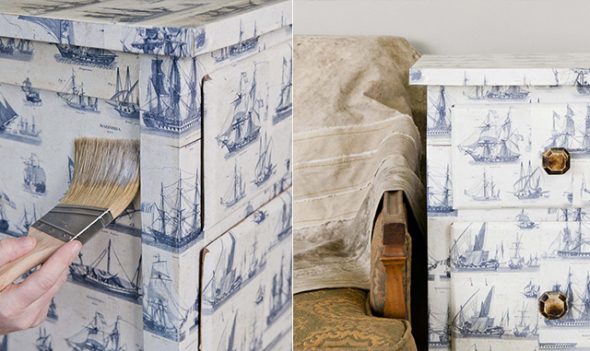
If painting of art elements on furniture or adding any volumetric decorations is envisaged, this should be done after the glue has dried.
Brush off the old coating (a rag clogs the dust into cracks), put on a respirator and sand the surface of all parts. After each treatment, remove dust.
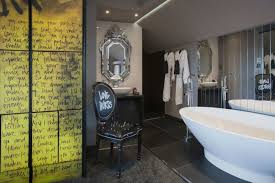
You can not only admire the closet, but also fully use it.
Degrease with acetone or white spirit.
Putty: wipe large flaws, remove unevenness, then level the surface with a thin layer, treat with abrasive mesh No. 100-120, for painting No. 180 and above.
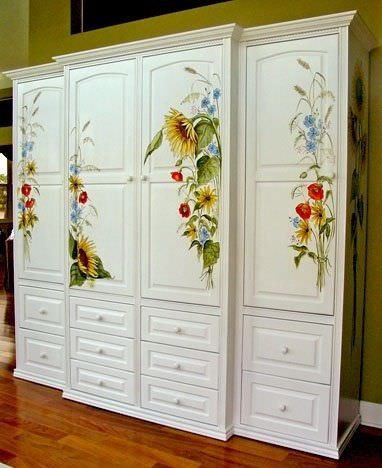
Do-it-yourself work on decoupage furniture is painstaking, but the result will be a pleasure from it.
Apply a primer - improves adhesion of the surface with adhesive and coloring materials, contributes to a uniform color tone.
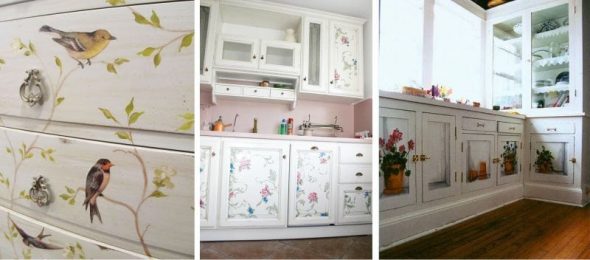
Before gluing the wallpaper, it is necessary to separate the seamy layer of paper, then they will become thinner and less varnish layers will be required.
After complete drying of the primer with acrylic paint, paint over the corners with a brush, large planes with a roller.
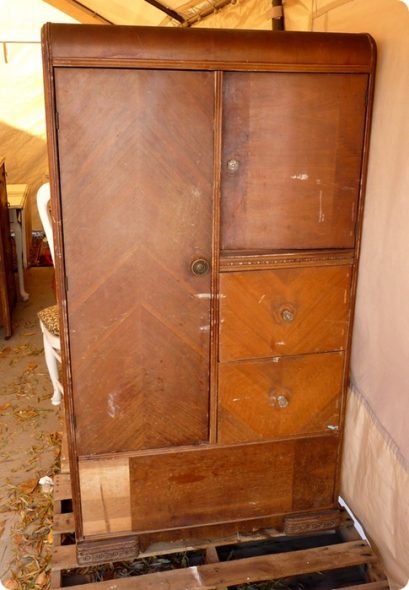
Pictures are cut, smoothing the transition to the surface of parts is provided in the case of their application with several layers of varnish.
To create the look of antique furniture after the first layer of acrylic paint, fluff a few spots on the surface of the cabinet with a paraffin candle. Then again primed the cabinet. A large sandpaper or abrasive mesh wipe the islands, previously treated with paraffin.
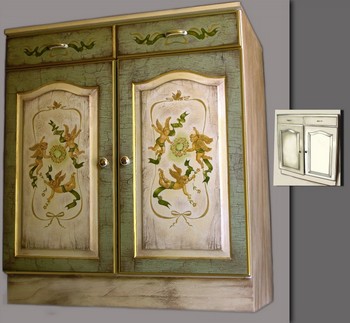
. If a napkin is used as a decor for decoupage, then carefully cut the paper around the pattern.
The most difficult thing to prepare for a decoupage is a polished cabinet - the paint on the polish falls badly, so it must be thoroughly cleaned with a large emery cloth.
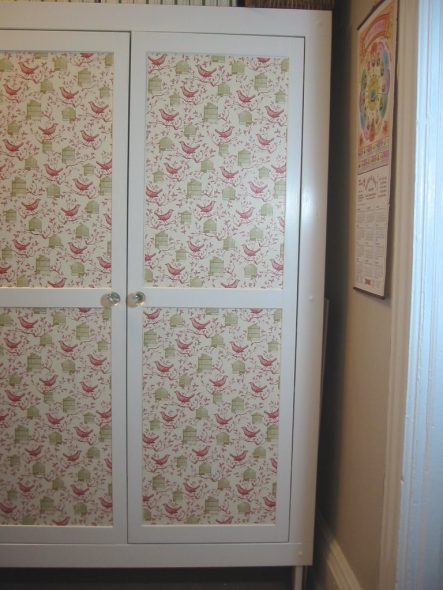
The most difficult thing to prepare for a decoupage is a polished cabinet - the paint on the polish falls badly, so it must be thoroughly cleaned with a large emery cloth.
Decoupage process
To fix the drawings you will need the following materials and tools:
- PVA glue;
- water;
- two paint brushes - one thin for painting, one wider for gluing;
- napkins;
- acrylic lacquer;
- acrylic white paint;
- colors for paint.
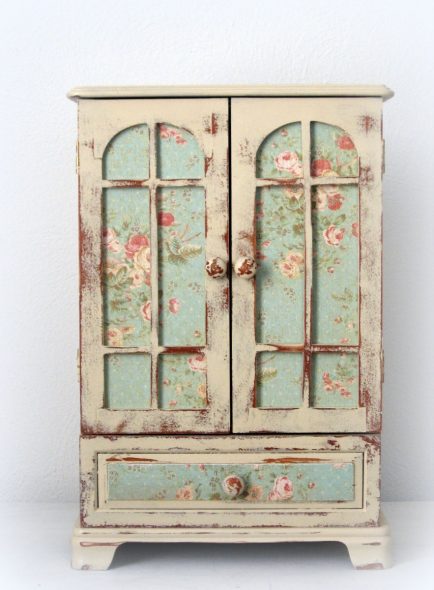
After complete drying of the primer with acrylic paint, paint over the corners with a brush, large planes with a roller.
Apply PVA glue, slightly diluted with water, to the prepared cabinet with a paintbrush at the location of the pictures. If a napkin is used as a decor for decoupage, then carefully cut the paper around the pattern. It breaks off, and it is not cut off so that the transitions between the pattern and the plane of the cabinet are invisible. Pictures are cut, smoothing the transition to the surface of parts is provided in the case of their application with several layers of varnish.
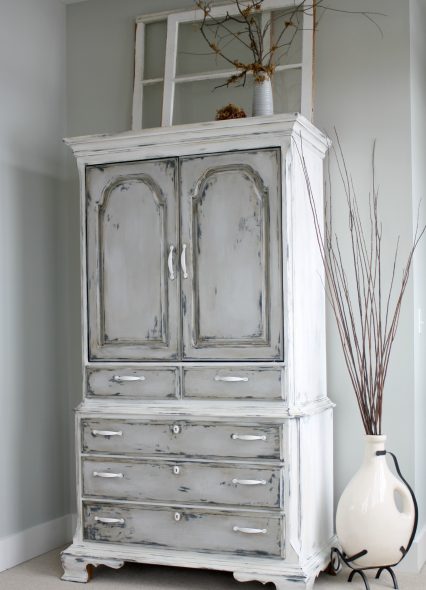
Learning to do decoupage wardrobe
Moving from the center of the napkin, using a brush, gently straighten the paper, pressing lightly, avoiding wrinkling and wrinkling.Periodically it is necessary to moisten the drawing with diluted PVA glue.
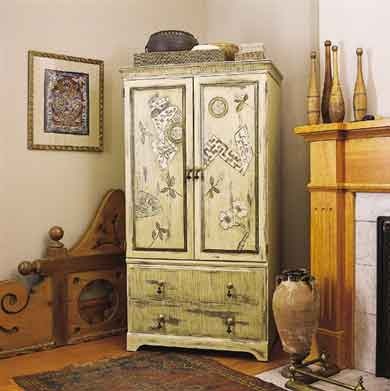
Preparing a closet for decoupage is the most time-consuming process, accompanied by dust.
Before gluing the wallpaper, it is necessary to separate the seamy layer of paper, then they will become thinner and less varnish layers will be required.
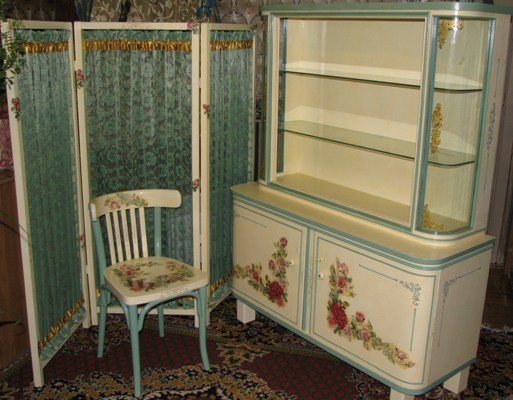
Decoupage old cabinet is not limited to paper materials, you can use beads.
To avoid the rupture of the pattern during decoupage, the usual clerical file will help:
- put a napkin over it;
- spread pva with glue;
- attach to the cabinet surface;
- iron with a cloth or sponge;
- remove the file.
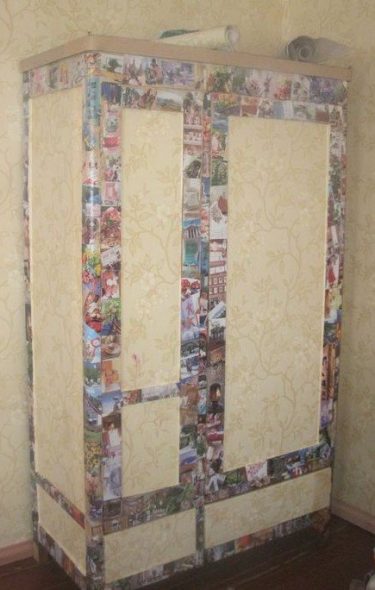
Wallpapers are suitable for those who are just beginning to master the decoupage technique of furniture.
Apply acrylic lacquer on a napkin with at least 2 layers, the wallpaper is covered with 3 layers, the effect of “aging” of the cabinet can be made using craquelure varnish.
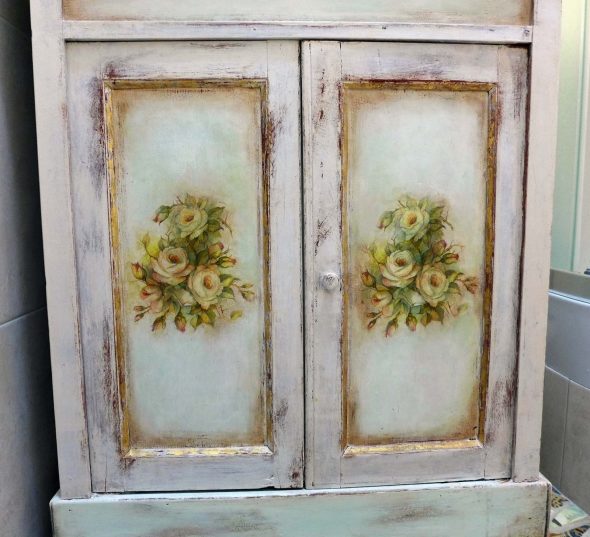
We learn to perform decoupage cabinet with their own hands.
If painting of art elements on furniture or adding any volumetric decorations is envisaged, this should be done after the glue has dried.
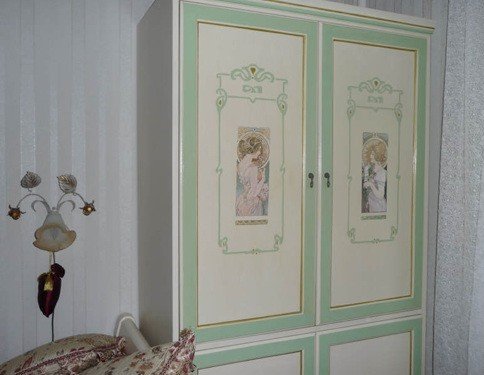
The principle of decoupage is gluing paper drawings to any household items to create a certain style.
Dense pictures can be pasted in the way of “embedding”
- cover the cabinet with 2 layers of lacquer at intervals during the drying period;
- apply varnish for the 3rd time, attach a picture;
- rubber spatula, easily pressing, push the paper into the surface;
- After drying, coat with varnish.

Picking up materials and turning on the imagination, you can do the decoupage of the cabinet with your own hands in any style - classical, Provence, country, modern.
Do-it-yourself work on decoupage furniture is painstaking, but the result will be a pleasure from it. You can not only admire the closet, but also fully use it.
VIDEO: The decor of the old cabinet, master class
50 photo ideas how to make decoupage cabinet do it yourself
 The combination of colors of the floor and ceiling in the interior. Table and photo
The combination of colors of the floor and ceiling in the interior. Table and photo
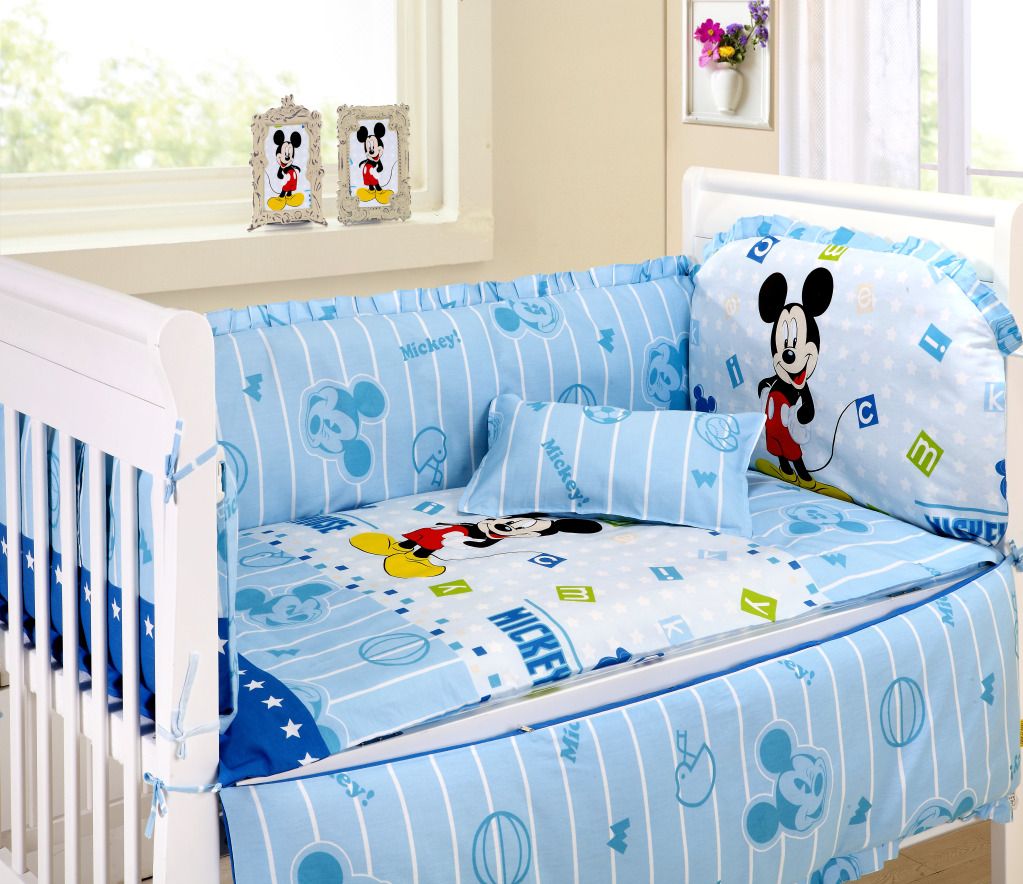 Sides in a bed for newborns with their own hands. Patterns and Tips
Sides in a bed for newborns with their own hands. Patterns and Tips
